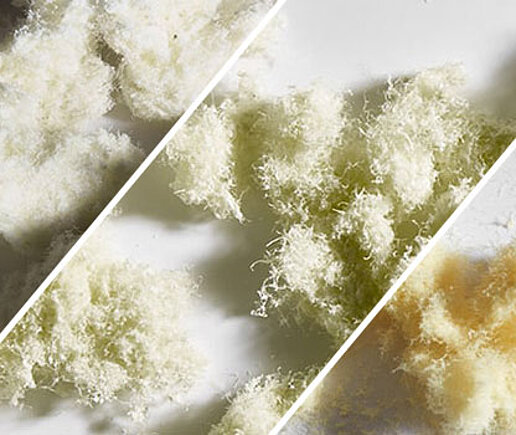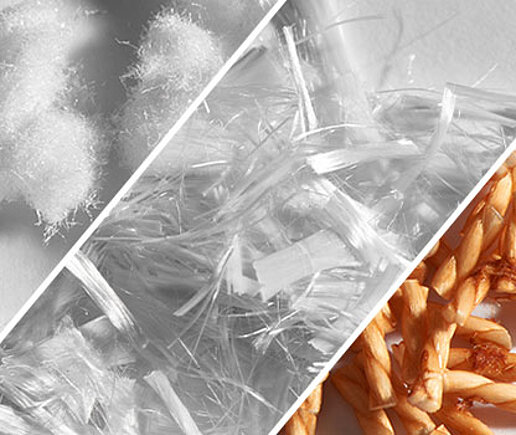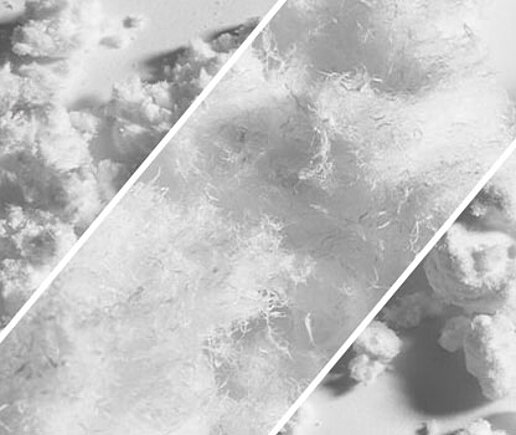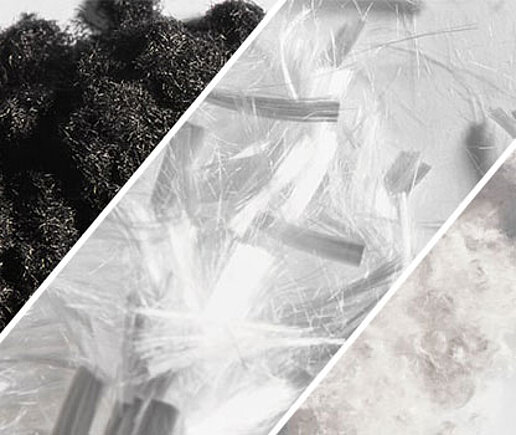

At STW you can choose from a comprehensive range of fibre fillers. Employing unique grinding technology, fibre fillers are made from randomly-oriented fibres, continuous fibres, threads or woven textiles, again, often according to your individual requirements, and often using fibres from the recycling sector. In this way, depending on fibre fineness and specification, we can produce products with a high degree of purity and uniform fibre length distribution.
Filter application areas:

Acrylic fibre
Acrylic fibres, also called PAC or PAN, consist of at least 85 % of the monomer acrylonitrile. The co-monomers…

Aramid fibre
The word ‘aramid’ is a composite of the words ‘aromatic’ and ‘polyamide’ and is also known by the protected…

Carbon fibre
Carbon fibres have become well known through their use in carbon fibre-reinforced components. Installed in…

Polyester fibre
The group of polyester fibres represents the largest proportion of synthetically produced fibres worldwide.…

Polyethylene fibre
Polyethylene (PE for short) belongs to the polyolefin family and, together with polypropylene, is the most…

Polypropylene fibre
Polypropylene (or PP for short) belongs to the polyolefin family and is the most widely used plastic in Europe…

Basalt fibre
Basalt fibres are produced by melt spinning a mass of molten basalt heated to a temperature of 1400 °C. The…

Glass fibre
If long, thin threads are drawn from a glass melt, this produces glass fibres. These technically very flexible…

Jute fibre
Jute is obtained from the stems of the Corchorus plant and belongs to the family of bast fibres. After cotton,…

Coconut fibre
Coconut fibre, also known as coir, is obtained from the outer shell of the unripe coconut. The cellulose…

Hemp fibre
Hemp fibres belong to the bast fibre family and have been successfully cultivated and processed by humans for…

Sisal fibre
Sisal fibres are made from the leaves of the agave plant and thus belong to the family of leaf fibres. They…

Flax fibre
Linen made from flax fibre was virtually replaced by cotton in the 19th century, but it is regaining…

Cotton fibre
Its excellent properties and resulting wide distribution make cotton the most important natural textile fibre.…

Cellulose fibre
Cellulose fibres form the main component of the cell walls in plants, which means that cellulose is the most…

Lightweight fillers
Our lightweight filler ‘Stiff’ consists of hollow microspheres that consist largely of silicon dioxide and…

Polyvinyl alcohol fibre
Polyvinyl alcohol (or PVA for short) is formally the polymer of vinyl alcohol. It is also known under…

Mineral wool fibre
Mineral wool fibres (also known as stone wool fibres) are produced by melt-spinning a mass of molten stone at…